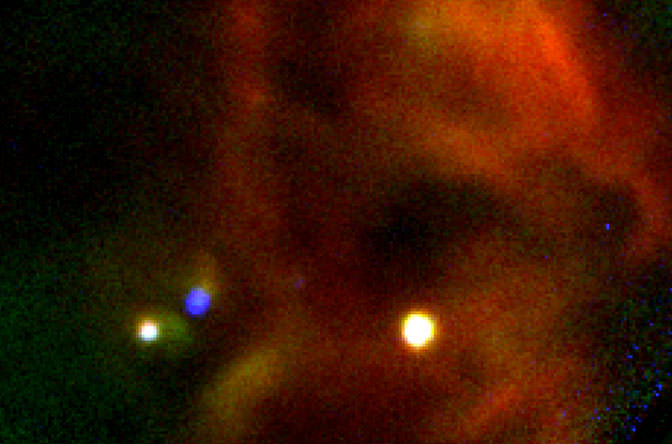[/caption]
Around 1957 light years away, a dense molecular cloud resides beside an OB star cluster locked in a massive HII region. The hydrogen envelope is slowly beginning to billow out and separate itself from the molecular gas, but we’re not able to get a clear picture of the situation thanks to interfering dust. However, by engaging NASA’s Stratospheric Observatory for Infrared Astronomy (SOFIA), we’re now able to take one of the highest resolution mid-infrared looks into the heart of an incredible star-forming region known as W40 so far known to science.
Onboard a modified 747SP airliner, the Faint Object infraRed Camera for the SOFIA Telescope (FORCAST) has been hard at work utilizing its 2.5 meter (100″) reflecting telescope to capture data. The composite image shown above was taken at wavelengths of 5.4, 24.2 and 34.8 microns. Why this range? Thanks to the high flying SOFIA telescope, we’re able to clear Earth’s atmosphere and “get above” the ambient water vapor which blocks the view. Not even the highest based terrestrial telescope can escape it – but FORCAST can!
With about 1/10 the UV flux of the Orion Nebula, region W40 has long been of scientific interest because it is one of the nearest massive star-forming regions known. While some of its OB stars have been well observed at a variety of wavelengths, a great deal of the lower mass stars remain to be explored. But there’s just one problem… the dust hides their information. Thanks to FORCAST, astronomers are able to peer through the obscuration at W40’s center to examine the luminous nebula, scores of neophyte stars and at least six giants which tip the scales at six to twenty times more massive than the Sun.
Why is studying a region like W40 important to science? Because at least half of the Milky Way’s stellar population formed in similar massive clusters, it is possible the Solar System also “developed in such a cluster almost 5 billion years ago”. The stars FORCAST measures aren’t very bright and intervening dust makes them even more dim. But no worries, because this type of study cuts them out of dust that’s only carrying a temperature of a few hundred degrees. All that from a flying observatory!
Now, that’s cool…
Original Story Source: NASA/SOFIA News. For Further Reading: The W40 Cloud Complex and A Chandra Observation of the Obscured Star-Forming Complex W40.

